Spiritual Travel
IRCTC Launches Subsidized Bharat Gaurav Tourist Trains for Kashi Darshana to Varanasi, Ayodhya, Gaya, and Many More: What You Need to Know
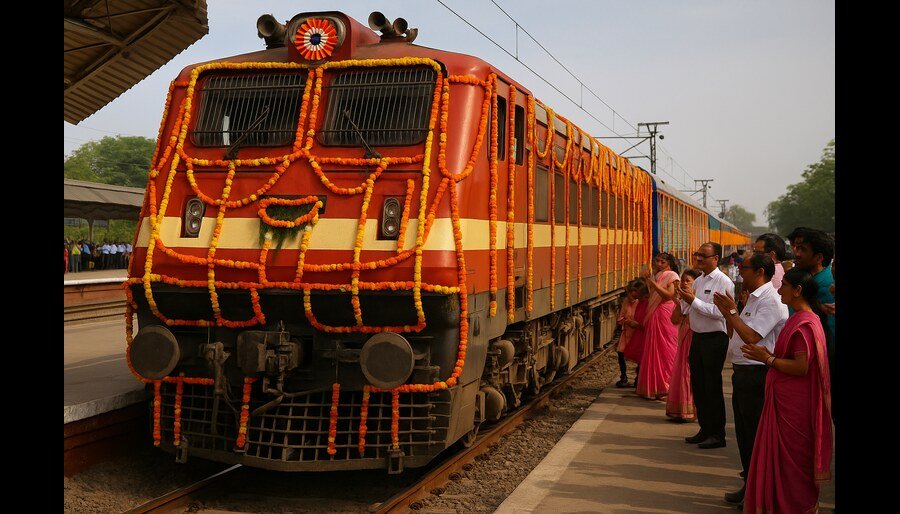
Thursday, July 31, 2025
For spiritual seekers and cultural enthusiasts across Karnataka, an extraordinary opportunity awaits to embark on soul-stirring journeys to some of India’s most revered holy sites. The Indian Railway Catering and Tourism Corporation (IRCTC), in a significant collaboration with M/s Hindu Religious Institutions & Charitable Endowment (HRICE), Government of Karnataka, has unveiled two exclusive pilgrimage tours under the celebrated Bharat Gaurav Tourist Train Scheme. These meticulously curated packages are designed specifically for residents of Karnataka, promising not just travel, but a deep dive into the nation’s spiritual heartland.
Imagine traversing the diverse landscapes of India, from the ancient ghats of Varanasi to the serene tip of Kanyakumari, all while enjoying comfortable and convenient travel. These special trains aim to make spiritual tourism more accessible and affordable, bridging geographical distances to connect devotees with their faith. With the added benefit of substantial subsidies from the Karnataka government, these tours represent an unprecedented chance to fulfill long-held pilgrimage aspirations. Whether you dream of experiencing the divine aura of Kashi Vishwanath, witnessing the newly built Ram Mandir in Ayodhya, or exploring the iconic temples of Southern India like Meenakshi Temple in Madurai and Padmanabhaswamy Temple in Thiruvananthapuram, IRCTC’s Bharat Gaurav Tourist Trains are set to transform these dreams into reality. Get ready to embark on a journey that promises spiritual enrichment, cultural immersion, and unforgettable memories, all while exploring the rich tapestry of India’s sacred heritage.
Kashi Darshana: A Sacred 9-Day Journey to North India
The first tour, Kashi Darshana, is a comprehensive 9-day pilgrimage scheduled from August 31st to September 8th, 2025. This spiritual expedition will take passengers from Karnataka through significant holy sites in Northern India, offering a deep dive into the region’s rich religious heritage.
- Destinations Covered:
- Varanasi: Explore the ancient city with visits to the Kashi Vishwanath Temple, Tulsi Mandir, and Sankat Mochan Hanuman Mandir.
- Ayodhya: Experience the newly consecrated Ram Mandir and the historic Hanuman Garhi.
- Gaya & Bodh Gaya: Discover the Vishnupad Temple and the profound Mahabodhi Temple.
- Prayagraj: Witness the confluence at Triveni Sangam and visit the Hanuman Temple.
- Package Cost & Subsidy: The standard package cost for Kashi Darshana is ₹22,500/- per person. However, a significant subsidy of ₹7,500/- is provided by the Government of Karnataka for passengers domiciled in the state, effectively reducing the cost to an affordable ₹15,000/-.
- Boarding Points: Convenient boarding points across Karnataka include SMVT Bengaluru/Yesvantpur, Tumakuru, Birur, Davangere, Haveri, Hubballi, and Belagavi.
Dakshina Yatra: Southern India’s Temple Treasures in 6 Days
The second tour, Dakshina Yatra, is a shorter yet equally enriching 6-day journey from September 11th to September 16th, 2025. This tour focuses on the prominent temples and coastal beauty of Southern India, providing a unique cultural and spiritual experience.
- Destinations Covered:
- Kanyakumari: Visit the iconic Bhagavathi Temple and the serene Vivekananda Rock Memorial.
- Thiruvananthapuram: Explore the renowned Padmanabhaswamy Temple.
- Rameswaram: Seek blessings at the revered Ramanathaswamy Temple.
- Madurai: Marvel at the architectural grandeur of the Meenakshi Temple.
- Package Cost & Subsidy: The package cost for Dakshina Yatra is ₹15,000/- per person. Karnataka residents benefit from a special subsidy of ₹5,000/- from the state government, bringing the effective price down to just ₹10,000/-.
- Boarding Points: Accessible boarding points for this tour include Belagavi, Hubballi, Haveri, Davangere, Birur, Tumakuru, and SMVT Bengaluru.
Comprehensive Inclusions for a Seamless Journey
Both Bharat Gaurav Tourist Train tours will operate in AC III tier class, ensuring comfortable travel for all passengers. The package inclusions are designed to provide a hassle-free pilgrimage experience:
- Accommodation: Non-air-conditioned rooms on a twin/triple sharing basis at various locations, with wash and change facilities as per the itinerary.
- Meals: All vegetarian meals are included throughout the tour.
- Transportation: Non-AC bus transfers for all sightseeing activities.
- Support & Security: Dedicated tour escorts for each coach, travel insurance, an IRCTC tour manager, and onboard security.
- Taxes: All applicable taxes are covered in the package cost.
Booking and Information
For reservations and detailed information regarding these pilgrimage tours, passengers can contact the following IRCTC offices:
- Bengaluru: 9003140710 / 8595931290 / 8595931291 / 8595931292
- Mysuru: 8595931294
- Hubballi: 8595931293
Alternatively, interested individuals can visit the official IRCTC website: www.irctctourism.com. These subsidized tours present an excellent opportunity for residents of Karnataka to embark on a spiritual journey to significant Indian destinations.
Spiritual Travel
Atul Patne, Maharashtra tourism principal secretary- The Week
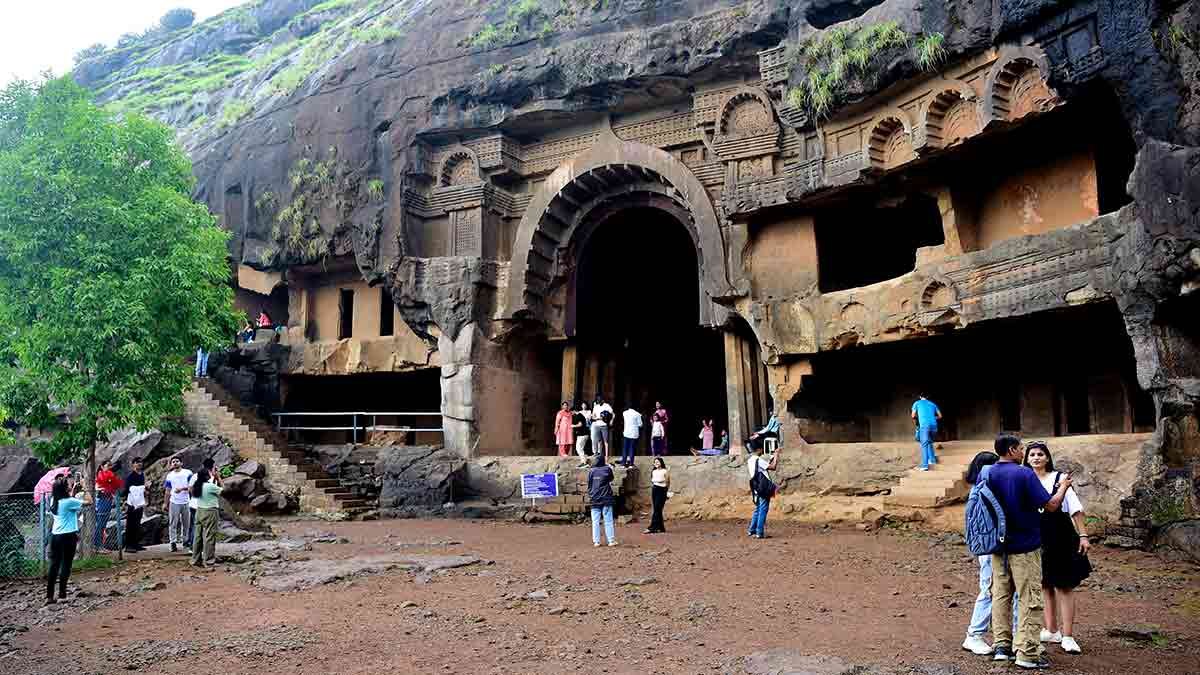
Interview/ Atul Patne, Principal secretary, tourism, Maharashtra
Maharashtra’s tourism potential is vast—ranging from beaches and heritage sites to wildlife reserves. In an interview, the state’s Principal secretary, tourism, Atul Patne, explains what makes his state a unique travel destination. Excerpts from an interview:
What is your strategy to position your state as a year-round destination?
Maharashtra is already a year-round destination. From beaches, heritage sites, and wildlife reserves to mountains, food, festivals, spirituality and adventure, Maharashtra truly has something for every traveller, every time of the year.
Unlike many northern states, Maharashtra enjoys a moderate climate. The monsoon season sees a significant influx of domestic tourists. From October to March, we witness strong international footfall. Even during the peak summer months of April and May, our beaches and coastal destinations remain popular.
How do you plan to promote lesser-known destinations like Lonar and Amboli?
Destinations like Lonar and Amboli are already gaining popularity, particularly among young travellers and special interest groups such as nature clubs, bird-watchers, photographers, cyclists, bikers, and road trip enthusiasts—largely thanks to social media. A special tourism circuit is being developed connecting Nashik, Nagpur, Chhatrapati Sambhajinagar, and Lonar, supported by enhanced rail and road connectivity.
How is Maharashtra aligning its tourism development goals with sustainability and environmental protection, especially in ecologically sensitive areas?
This is a topic very close to my heart. We are promoting responsible and sustainable tourism through policies that encourage homestays, bed-and-breakfast accommodations, and small hospitality ventures—especially those led by women under the AAI scheme.
Do you have plans to revamp branding and marketing outreach?
We have significantly stepped up our marketing efforts, focusing on young, adventure-seeking audiences. Our campaigns showcase Maharashtra’s rich history, forts, coastline, Sahyadris, spiritual sites and vibrant cuisine. Innovative initiatives include inviting global food experts to promote our cuisine and organising a walkathon during the centuries-old Pandharpur Wari pilgrimage. For business tourism, we have established the Maharashtra Convention Bureau to attract MICE events.
What role does rural and agro-tourism play in your vision for inclusive tourism development?
It is central to our sustainable tourism policy. Through the AAI scheme, we are enabling villages to become tourism hubs. A successful model has already been implemented in Chinchani near Solapur. These initiatives generate local employment, preserve rural traditions, and reduce migration of young people to cities.
Could you talk about upcoming infrastructure projects that aim to boost tourism?
Our tourism policies include incentives for large-scale projects like aquariums, island development, and theme parks. We are actively encouraging public-private partnerships under the Viksit Maharashtra 2047 vision. NRIs are also being invited to invest in their ancestral towns to aid local development and tourism infrastructure.
Are there dedicated efforts to revive heritage tourism with guided storytelling, digital experiences, or festivals?
Forts are the pride of Maharashtra, and we are working closely with the ASI to take over select sites for development. Plans include experience centres, museums, immersive AI domes, and festivals that celebrate our forts, food and cultural heritage.
What are you doing to improve tourist experience, especially in popular but crowded spots like Lonavala or Shirdi?
We are focusing on behavioural change through clear signages, awareness campaigns and messaging to encourage responsible travel. Fines and regulations are being strengthened. At the same time, we are working on deploying a tourism security force and are conducting safety audits—especially for adventure operators. We want to bring about the change in the mindset of the crowd and that is a daunting task, but we will get there.
Ultimately, both tourists and authorities must share the responsibility to maintain these destinations. As for safety, we are setting SOPs for adventure tour operators, ensuring safety audits, deploying tourist police. These are some of the plans in the pipeline.
What is your vision for Maharashtra in the next five years?
Our goal is to make Maharashtra the number one tourism destination in India. We aim to do this through a model that is sustainable, inclusive, humanitarian and community-driven.
Spiritual Travel
Sobhita Dhulipala visits Velankanni Church and Nagore Dargah during spiritual trip to Tamil Nadu – Watch |
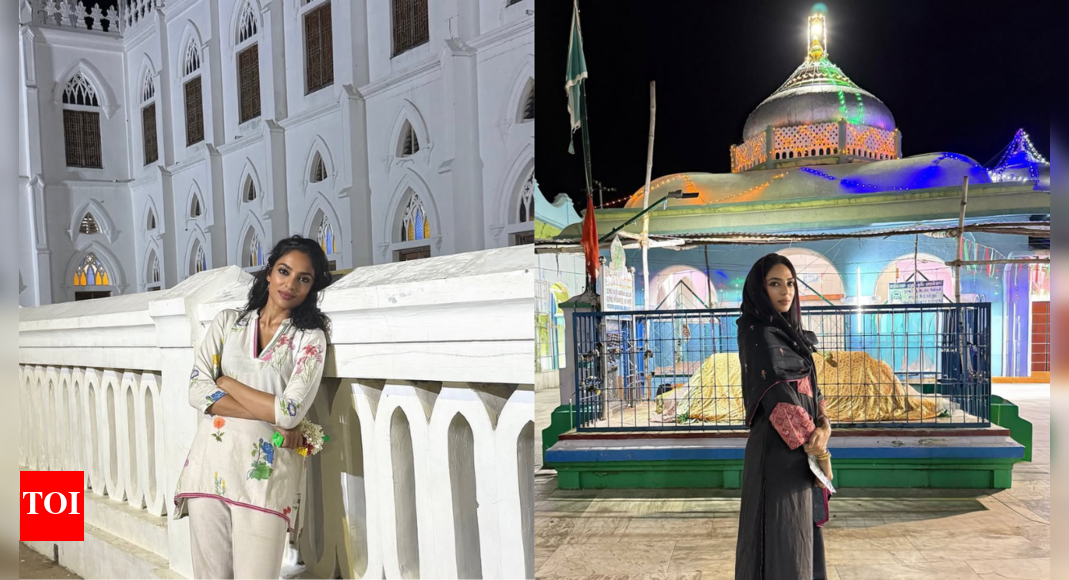
Actor Sobhita Dhulipala recently shared some pictures of her spiritual getaway in Tamil Nadu. The ‘Made in Heaven’ star took to Instagram on Thursday to share glimpses from her serene trip, which included visits to the iconic Velankanni Church and Nagore Dargah.
At Velankanni Church and Nagore Dargah
The actor shared photographs of her travels in her post with the title of “Life lately.” In these images, Sobhita was seen in a white outfit praying at the Velankanni Church, known formally as “The Basilica of Our Lady of Good Health”. The church is one of India’s most frequented Catholic shrines.Sobhita also visited the Nagore Dargah, a prominent Sufi shrine in Tamil Nadu located in the coastal town of Nagore. For this visit, she wore a black outfit, which complemented the modesty of the Dargah as well as fit with the overall spiritual tone of the site. The Dargah is the final resting place of the Sufi saint Nagore Syed Abdul Qadir Shahul Hamid.
Enjoying the beach
Sobhita also shared pictures of herself enjoying some peaceful moments at the beach as the waves washed over her feet. One photo shows her, with a calm expression on her face, relishing the sun and the joy of the moment. Another photo shows her feeling completely joyful alone. She also shared a photo looking beautiful in a gold saree from a friend’s wedding.On the work front, Sobhita was last seen in ‘Monkey Man’, Dev Patel’s directorial debut, which did not see a theatrical release in India. She also starred in ‘Love, Sitara’, but has remained quiet about her upcoming projects.Sobhita made headlines last year after she got married to Telugu star Nag Chaitanya after a long rumoured relationship.
Spiritual Travel
Jaljala holds potential for religious tourism but remains neglected « Khabarhub
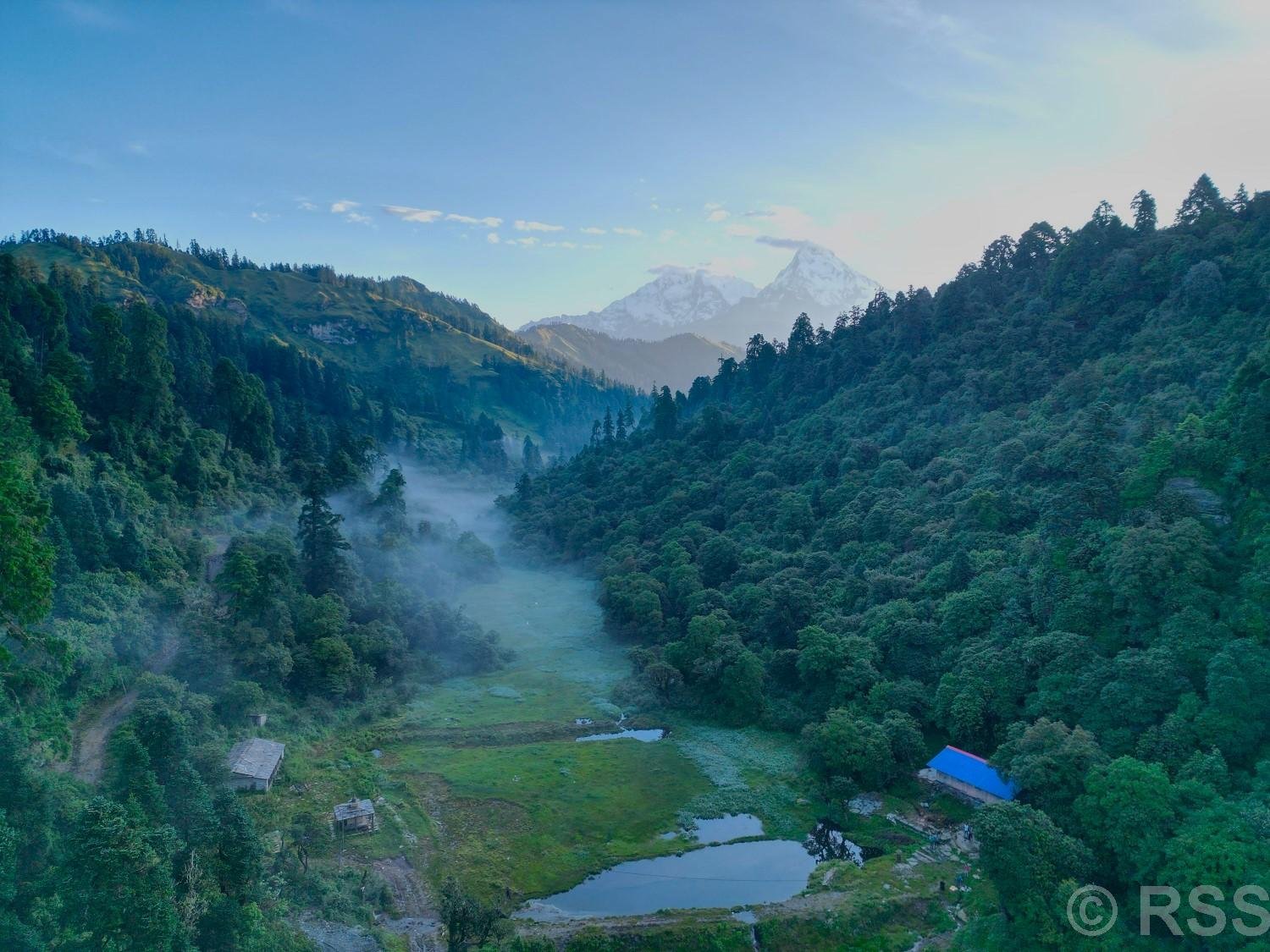
Jaljala area in Myagdi/RSS
MYAGDI: Jaljala, located at the tri-junction of Myagdi, Parbat, and Kaski districts, holds significant religious and tourism potential but remains largely neglected due to lack of infrastructure and promotion.
The Jaljala area, spanning Modi Rural Municipality in Parbat and Annapurna Rural Municipality in Myagdi, is referred to in Hindu scriptures as Hampal, Kalanjar, and Mrigasthali. Despite its religious importance, the area suffers from underdevelopment and poor accessibility.
According to cultural and heritage expert Prof. Dr. Jagannath Regmi, Hindu scriptures including Agni, Garuda, Kurma, Baraha, Skanda, Shivamaha, Padma, Brihannaradiya, Linga, Matsya Puranas, the Mahabharata, and the Shrimad Bhagavatam mention Hampal and Kalanjar.
“Despite being praised in sacred texts, Kalanjar—highlighted by Muktakantha in mythological literature—remains underdeveloped due to lack of publicity, remoteness, limited road access, and the absence of documented materials beyond oral traditions and natural and cultural sources,” said Regmi.
He noted that some ancient temples, shelters, and caves in the area are now at risk of disappearing due to a lack of protection. Religious texts claim that sages once performed penance in the Jaljala region, using its herbs for medicine, gaining spiritual insights, and offering Pinda (ancestral offerings) to attain salvation.
Tika Pun of Lespar, Modi Rural Municipality-4, who operates a small restaurant in Jaljala, said that due to limited awareness of the site’s religious and scenic value, tourist and pilgrim numbers remain low.
“Visitors mainly arrive during Mahayagyas held in autumn and spring. Otherwise, the place remains deserted,” he added.
Situated at an altitude of 3,300 meters, Jaljala features a gorge surrounded by breathtaking views of the Annapurna range. Just two decades ago, locals from Jaljala and Modi Rural Municipality used to graze cattle here during the monsoon, a practice that has since vanished.
From Jaljala, a 10-minute walk to Wi-Fi Hill offers views of Annapurna, while a 30-minute hike to Mateko Lake reveals panoramic views of Dhaulagiri, Annapurna, and Machhapuchhre.
According to Govinda Sharma, a visitor from Kushma, the scenic beauty of the region and surrounding settlements makes the challenging journey worthwhile.
Jaljala is also rich in biodiversity. Medicinal herbs such as bojo, satuwa, chiraito, amilo, brahmi (bholatapre), pashanbhed, jethimadhu, padamchalnu, niramasi, jatamasi, timmur, and siltimmur are found here. Wildlife sightings include deer along the banks and birds like vultures, cuckoos, and owls.
The region is accessible by trekking routes from Ghodepani, Pun Hill, Mohare Danda, Nagi (in Myagdi), and Modi Rural Municipality in Parbat. A dirt road connects Jaljala to Lekphant and Shalija in Jaljala Rural Municipality, according to Vice-Chairman Deepak Acharya.
“A grand yagya was organized to highlight Jaljala’s religious significance, and electricity has now been extended to the area,” Acharya said. “The federal government has allocated Rs 30 million for tourism infrastructure development here.” The Beni–Lekphant road has also been blacktopped recently, and further road upgrades have been requested.
-

 Brand Stories3 weeks ago
Brand Stories3 weeks agoBloom Hotels: A Modern Vision of Hospitality Redefining Travel
-

 Brand Stories2 weeks ago
Brand Stories2 weeks agoCheQin.ai sets a new standard for hotel booking with its AI capabilities: empowering travellers to bargain, choose the best, and book with clarity.
-

 Destinations & Things To Do3 weeks ago
Destinations & Things To Do3 weeks agoUntouched Destinations: Stunning Hidden Gems You Must Visit
-

 Destinations & Things To Do2 weeks ago
Destinations & Things To Do2 weeks agoThis Hidden Beach in India Glows at Night-But Only in One Secret Season
-

 AI in Travel3 weeks ago
AI in Travel3 weeks agoAI Travel Revolution: Must-Have Guide to the Best Experience
-

 Brand Stories1 month ago
Brand Stories1 month agoVoice AI Startup ElevenLabs Plans to Add Hubs Around the World
-

 Brand Stories4 weeks ago
Brand Stories4 weeks agoHow Elon Musk’s rogue Grok chatbot became a cautionary AI tale
-

 Brand Stories2 weeks ago
Brand Stories2 weeks agoContactless Hospitality: Why Remote Management Technology Is Key to Seamless Guest Experiences
-

 Asia Travel Pulse1 month ago
Asia Travel Pulse1 month agoLooking For Adventure In Asia? Here Are 7 Epic Destinations You Need To Experience At Least Once – Zee News
-

 AI in Travel1 month ago
AI in Travel1 month ago‘Will AI take my job?’ A trip to a Beijing fortune-telling bar to see what lies ahead | China



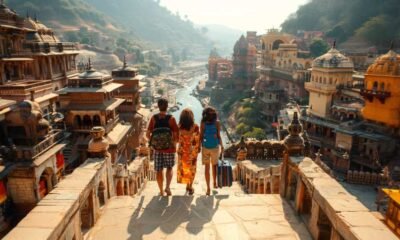





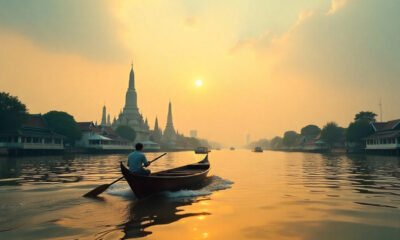



You must be logged in to post a comment Login